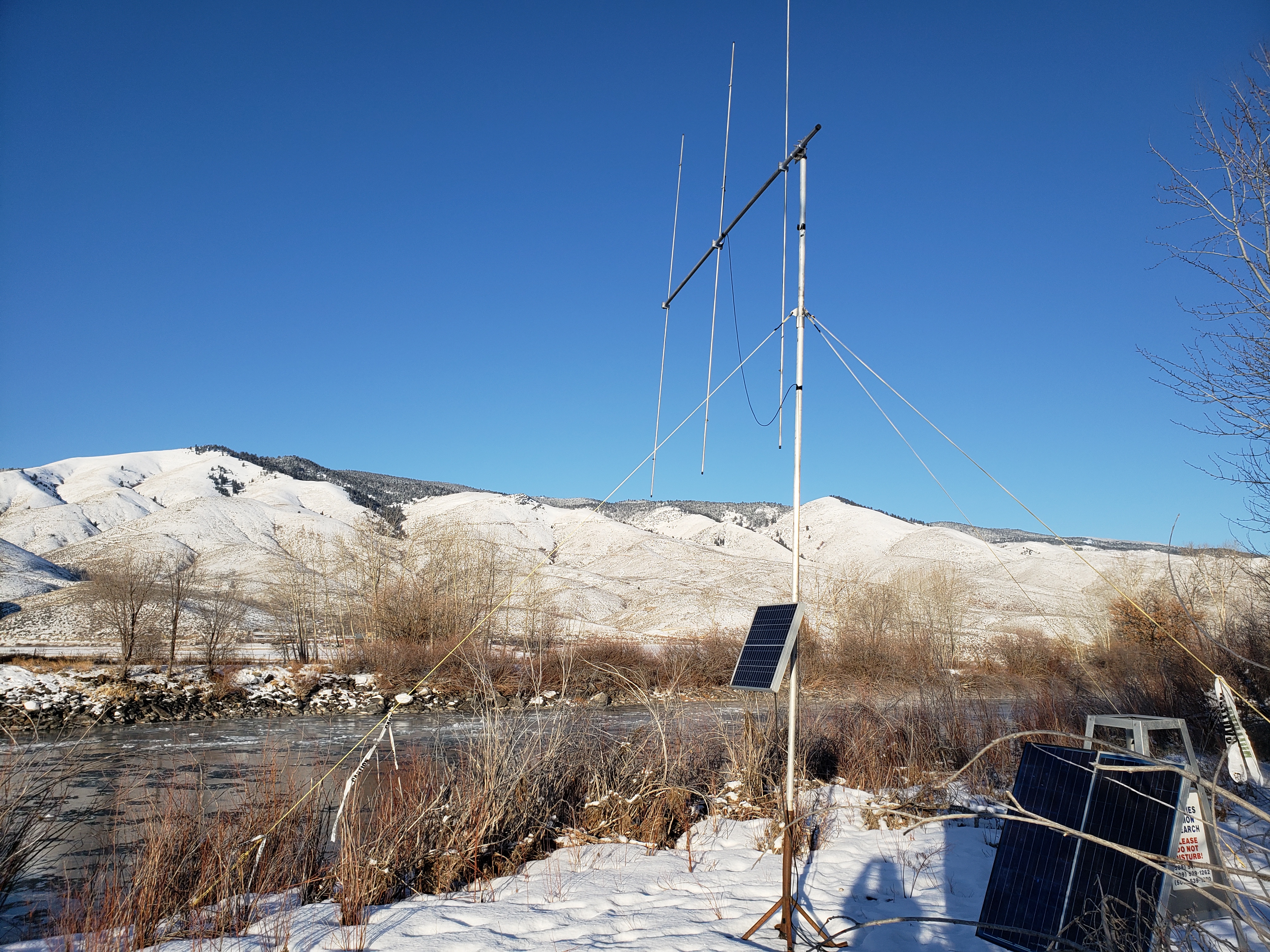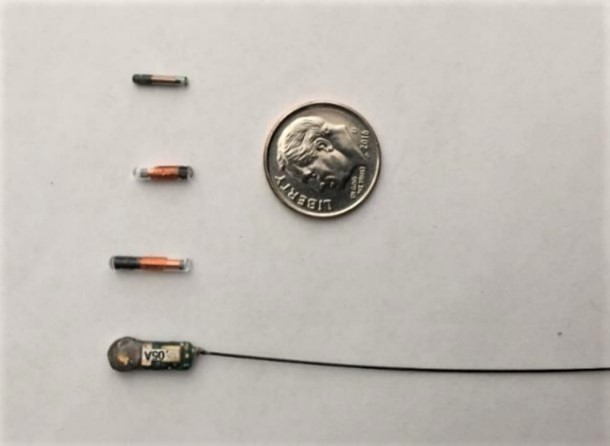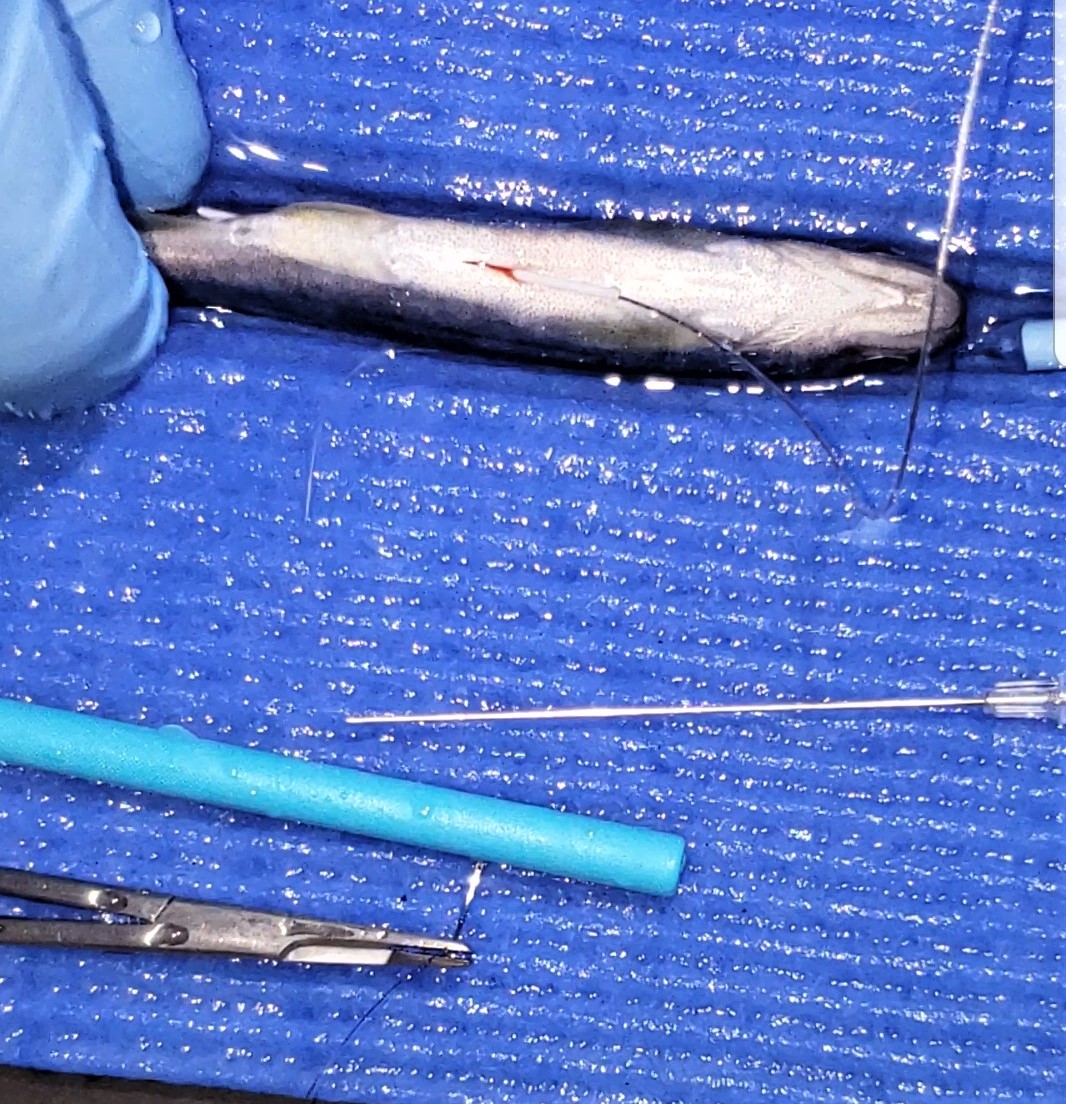Anglers fishing the upper Salmon River this fall and winter may notice large antennas in various locations near the riverbank.
These antennas are part of a juvenile Chinook Salmon radio telemetry study conducted by Biomark's applied biological services team in collaboration with the Idaho Fish and Game. The study hopes to gain insights into how juvenile Chinook Salmon utilize their habitat in the Lemhi River, as well as their movements and survival in the Salmon River.

Each fall, a significant proportion of the young salmon from the Lemhi River move into the Salmon River. Until this study, not much was known about their overwinter behavior in the river prior to migrating to the ocean the following spring.

Radio tag (at bottom) compared to passive integrated transponder (PIT) tags.
To learn more about their behavior during this important time, tiny radio tags weighing less than .5 gram are surgically implanted into a sample of young salmon collected from rotary screw traps in the Lemhi River. The juvenile salmon are then released back into the river and the tracking can begin.

Weighing less than .5 gram, the radio tag is surgically implanted in the young salmon.
Over the next several months, the radio-tagged salmon will be detected throughout the area by numerous stationary antennas and mobile tracking. Seven stationary antennas are located along the Lemhi River and seven are located along the Salmon River from Salmon downstream to Corn Creek.
These stationary antennas are what most anglers will notice when out fishing. The stationary antennas operate 24 hours per day and allow for many more detections to be recorded compared to mobile tracking alone.
Recording the movements of these juvenile Chinook Salmon between the various sites will allow biologists to estimate the travel times and survival of these remarkable fish. Ultimately, information collected study will help managers in future habitat restoration and conservation activities in the upper Salmon River basin.
For more information on this study, visit the Biomark website at https://www.biomark.com/applied-biological-services/what-we-do/telemetry.

